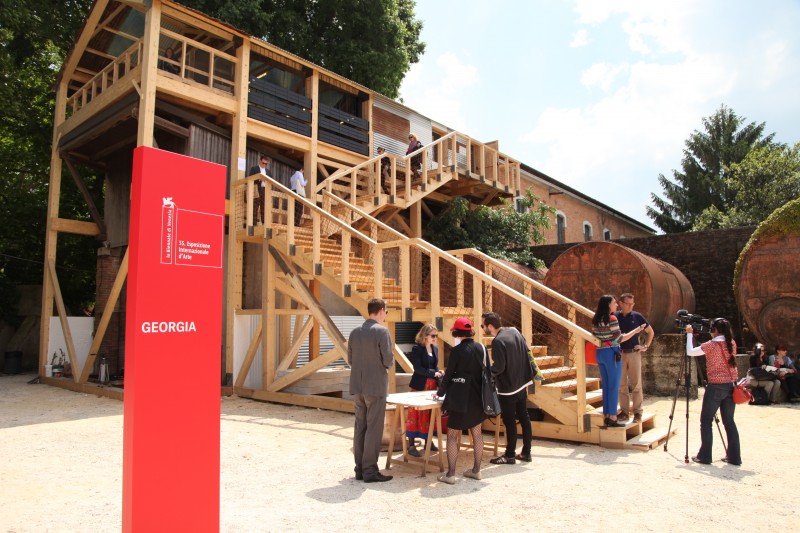
Venice: “Kamikaze Loggia” at The Georgian Pavilion
Photo by Levan Maisuradze
I was introduced to a world I hardly knew, when I travelled to Italy for the 55th Venice Biennale for the Spring media preview. Not that I was some country bumpkin when I stepped off the train in the Stazione di Venezia Santa Lucia, but I sensed how much of a foreigner in a foreign land I was. To tell the truth, my first impression of Venice coming across the viaduct from the mainland was the clouds. The clouds and the sky—the tremendous, voluminous cumulus clouds lying on a distant horizon and silhouetted in the perfectly clear light blue of the sky. That natural beauty was truly breathtaking.
Very soon after, I had a laugh at the irony. Venice is a city of artifice, the social and cultural equivalent to Disneyland. Whatever its history, it is a truly unnatural place now functioning simply to entertain and delight. That’s probably not a bad thing in itself, and I can understand how Luigi Barzini in a New York Times article could describe it as “undoubtedly the most beautiful city built by man”[sic]. It’s like a place constructed entirely for the benefit of our aesthetic sensibilities having banned most cosmopolitan realities to the mainland—well, they do pick up garbage but in a way that is so human scale that it’s more cute and entertaining than real. In Venice, masks are like North American baseball caps and fantastical ones can be found in shops on virtually any Venetian street. Disguise and artifice abound. A city of sensory delight. Of aesthetic delight. It is little wonder that every other year it becomes the site of one of the biggest art shows in the world. Art and artifice are woven into the essential fabric of the city making it a high end Disney World!
I had three days to see the Biennale—that would seem enough time to see an exhibition if the Biennale were an exhibition, but it is a gaggle of exhibitions in a bunch of places. There is the historic Giardini section that houses many of the original national pavilions; thirty different buildings including a very huge one that housed Il Palazzo Enciclopedico, or, in English translation, The Encyclopedic Palace. Il Palazzo is the big transnational, trans-historical curatorial exploration by Massimiliano Gioni, the associate director of New York’s New Museum, who was picked by the Biennale’s powers-that-be to perform as the 2013 Biennale curator. Those power brokers, like most, are not entirely transparent, although hardly for a moment was I unaware that power and art are relatives and that money is a dear relative of both.
To recount. In the Giardini there are 30 exhibitions. The Biennale continues down the tree-lined Viole Giuseppe Garibaldi and around a couple of Venetian corners to the truly spectacular, even in the rain, Arsenale where Il Palazzo continued in what seemed like a mile long building – and it may be! – as well as another sixteen national pavilions. The Arsenale spreads over 110 acres and was the historic heart of Venetian power and “one of the earliest large-scale industrial complexes in history”—in Venice! It continues today as a not-much-in-evidence naval base and, of course, a site for the Biennale every two years. Trying to find a bathroom in the rain did not leave me much space for reflection, yet I did wonder about art as perhaps a poor relation to spent power today. Whatever the answer, the Biennale’s sites enforced some reflection on the relationships of power, money and aesthetic objects. Real power is in evidence, but shadowy, and perhaps not really real.
To again recount, there are in the Arsenale another 17 exhibitions. At times any one “exhibition” seemed like it might actually be more than one and 17 certainly felt like an underestimation. There are so many hours of looking and so many miles of walking—the Biennale has a total of 47 exhibitions, which it’s easy to walk through without necessarily stopping to see. In fact, it was on the third day and several rooms into the Arsenale’s portion of Il Palazzo, when I found myself surrounded by a dozen large scale video projects, a swinging, hanging upside down large tree, and 30 or more small conic shaped piles of pungent, colourful spices—this is just one room albeit a very large one that I imagined once housed enough explosives to destroy every last thing in my New Brunswick hometown, maybe even my former hometown Halifax. It was here that I finally said “I QUIT” and sat down to watch a documentary video on feminism while trying to ignore all the commotion of hundreds of passing people. I don’t know what I missed, how many rooms in Il Palazzo were yet to come. I felt like I were in a three round boxing match and knocked out two minutes into round three. But there may have been two and a half minutes left? In any case, I couldn’t look any further.
What I have passed over is that along with the 47 or so projects in the Biennale site itself, there are over 70 installations and exhibitions that are part of the 55th Venice Biennale, scattered throughout Venice in galleries, storefronts, empty palaces. Art was everywhere and beyond. I never got there.
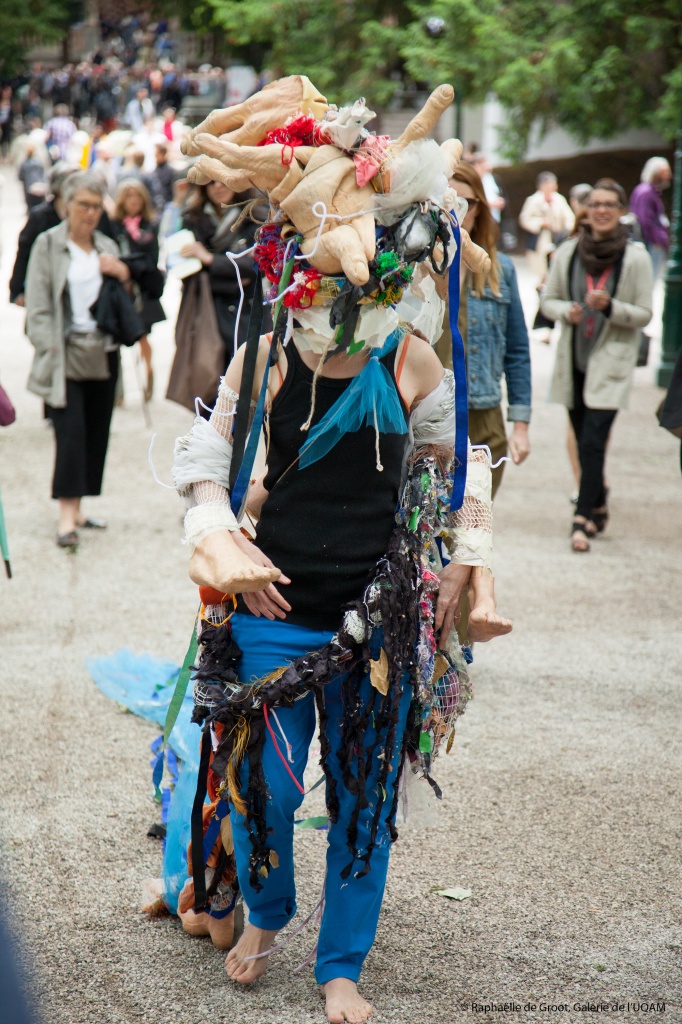
Performance by Raphaëlle de Groot at the 55th Venice Biennalle, 2013.
© Raphaëlle de Groot et Galerie de l’UQAM
Photo : Gwenaël Bélanger
I was never able to get, for instance, to the Terra Nova Art Foundation’s installation About Turn: Newfoundland in Venice, Will Gill & Peter Wilkins. How bad is that? How bad! But About Turn was just that little bit too much beyond my endurance, as it required crossing the Canal Grande to the Galleria Ca’Rezzonico after I’d spent hours walking in the rain. I did get to see momentarily the artist Canadian Art called “an artful wanderer in Venice,” Sobey Art Award winner Raphaelle De Groot. She designed a performance that would take her on a gondola ride. It was by chance that I saw the work. Actually, what I mostly saw was her entourage of documentarians running along a canal photographing and otherwise recording her intervention into Venice’s already artful spaces. It was this mass of people that brought my attention to the passing art endeavour. Honestly? It seemed silly. Whatever strength there may have been in the work was vitiated by the drive for documentary evidence.
(Parenthetically, I did see one art star, Mireille Suzanne Francette Porte a.k.a. Orlan. As a performance in and of herself, she stood out from the crowd.)
Unlike Newfoundland’s off site installation, New Zealand’s Bill Culbert was on one of the main travelled walks between my hotel and the Giardini. I passed it at least six times over the three days, but didn’t know about it until I got home. A friend had seen something about the exhibition on the Internet, liked the work and liked that the work of an older artist (Culbert is 78) was featured in Venice. In my defence it was along this same walkway along the Canale di San Marco where the big private yachts are moored. Big is the wrong word. They were very big. It’s hard not to pay attention to conspicuous wealth when it is splashed in your face. As a result I missed Bill Culbert although perhaps this is a note-to-self that in an environment like Venice and a spectacle like the Venice Biennale, artists need to make more of a public spectacle of themselves—but more smartly than De Groot’s endeavor? And certainly big, brash and extravagant are encouraged.
Not that Sarah Sze’s installation at the U.S. Pavillion is brash. In its small way, it is big and certainly extravagant, with a vast accumulation of seemingly random everyday things. Thousands of things, higgledy-piggledy, here and there through several rooms and spaces and outdoors, too. A New York Times writer thought it “wacky.” For me it was a matter of more is less, and in this instance so much more was so much less. With all the stuff of Sze’s Triple Point I came out wondering if the emperor had any clothes. I didn’t think so. The current issues of Art Forum and Art in America think otherwise. It’s online. You should see what you think.
Mike Jagger and Brian Jones Going Home Satisfied After Composing ‘I can’t get not satisfaction’ is the title of one of the small unfired clay sculptures by Peter Fischli and David Weiss from their Suddenly This Overview which includes over 200 small sculptures from 1981 – 2012. I came across this on the second or third floor, one or the other I think, of the Giardini portion of Il Palazzo Enciclopedico. The work is itself an encyclopedic representation of the world. It works because the artists’ intelligence and discrete humour are continually present. The objects are important not as things in themselves but as what they are, representations. The details were only present insofar as they were necessary. Here less was so much more, and more was so much more than the sum of its parts.
For me the Fischli and Weiss was one of the real highlights of curator Gioni’s otherwise unconvincingly arbitrary encyclopedic enterprise. That said there were other highlights. Nikolay Bakharev (a Russian photographer showing once again that there are more known serious photographers than known serious photographers). R.Crumb (Crazy man, crazy! Check out R.’s 207-page version of The Book of Genesis. ). Bruce Nauman (If I had seen it. I missed it!) Eliot Porter (Mainly because I would never have expected to find his nature pictures in this context. Odd but refreshing at a moment when I needed refreshment). Kohei Yoshiyuki (Truly creepy photographs making the case that voyeurism, sex, and photography are inextricably united). There were a few others but I didn’t make mental notes.
In a recent Art Forum I read an interesting article about Georgian artists– the country that was part of the Russia of my youth not the southern American home of CNN. I insisted on finding the Georgian Pavilion. Luckily I did insist because it was at the extremely far end of the Arsenale, the very last “pavilion,” I think. Uncertainty here because by this point I was convinced there was no end. I say “pavilion” because Georgia’s Kamikaze Loggia was a rough-hewn structure temporarily tacked onto the second floor of what seemed like one of the Arsenale’s abandoned buildings. Designed by the artist Gio Sumbadze, it mimicked makeshift housing “remedies” back home. When I first came on this country’s contribution, it was raining. I was beginning to despair as I came around another corner only to encounter a group of perhaps a dozen disheveled men in rough formation. They were doing calisthenics, an odd looking sort of calisthenics to be sure yet with all of the earmarks of group exercise. It was pouring by now, and, to be honest, the guys really looked pretty unathletic! Who knew it was an artwork, a performance, but for the context, the world’s most famous art adventure? They were in fact doing calisthenics with movements based on body motions associated with each of the many religions operating in Georgia. It was a funny sight to begin and with knowledge of its basis in conflicting religions, it became more humourous and sadly absurdist. The Georgians indicated that Dada’s impulses are alive and still effective. We just have to walk a long distance to find them.
The Georgian site had much more to its wildly disperse project. It suggested art energies that had been renewed in a world, perhaps too jaded for its own good? I’m not sure—it was refreshing, nonetheless. The small DIY publication that accompanied the project was likewise refreshing, though as far as I could see, it was not for sale at the Biennale’s book emporium. I could hold it and read it, because it wasn’t slick in any respect and had a tactile DIY-feel.
Word had gone round, as it evidently does at every Biennale, about the “hot” artworks and artists, and I later found myself standing in line for 15 minutes at the French Pavilion next door to Shary Boyle’s installation at Canada’s Pavilion. It soon became obvious that it would be several hours in line—another day spent lining up in Disney World. Life is too short and, anyway, there was so much to see including a return visit to the Romanian Pavilion, the most unexpected highlight of the Biennale.
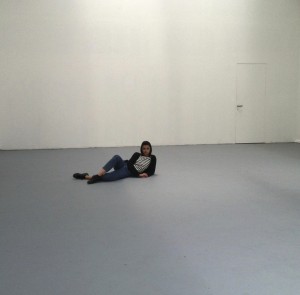
Still from An Immaterial Retrospective Of The Venice Biennale by Alexandra Pirici and Manuel Pelmuş. Photo: John Murchie
The Romanian project by Alexandra Pirici and Manuel Pelmus was titled An Immaterial Retrospective of the Venice Biennale and was accompanied by another modest publication which, sadly and unfortunately, the organizers ran out of on the first day—so unprepared were they for the tidal bore of us art lovers. Living where I do, it was interesting to read curator Raluca Voinea’s observation in her introductory essay that “the discourse in Romanian culture revolves circularly around issues such as periphery, provincialism, lack of recognition and other complexes.” It is an essay worth reading as well as the observations by the two artists Pirici and Pelmus especially if you are like I am and know so very little about Romania.
For The Immaterial Retrospective the artists hired performers to continuously present “enactments” of a selection of artworks from the past 100 years of the Biennale. Each day for the six months of the Biennale two sets of five performers will perform works that range from the famous – Picasso’s Guernica from the Spanish Pavilion in 1976 – to the infamous – Jeff Koons’ painting from his Made in Heaven series from the international Future Dimension exhibition in 1990 – to the not so well-known – ‘an embroidery depicting a boy playing an instrument’ in the People’s Republic if China’s exhibition in 1980. The catalogue of works must number over 100.The performers would “enact” each work as tableaux vivants. Before beginning each, one or another of the five would, in their best English, give a factual description of what was to be presented next rather like a brief catalogue description. The performers dressed liked the rest of us—casually, informally, each in their own outfit—would come from various parts of the large pavilion space, including from amidst the audience, to enact the artwork. There was no designated stage. There was one space and all of us were in it together. All of us watching, looking and seeing. All of us acting our various roles together.
And it was quiet. I wondered if I was a foreigner in a foreign land after all.


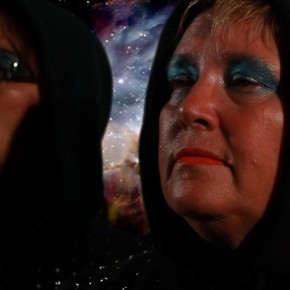
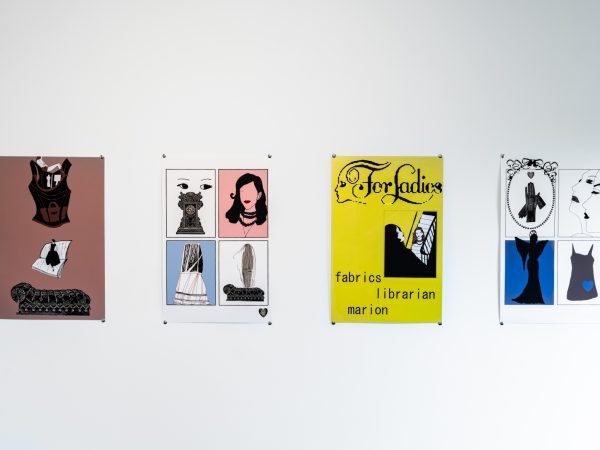
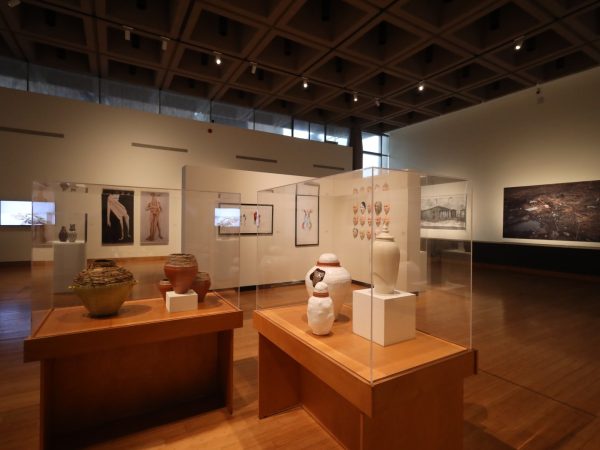











Leave a Reply